Sloths in Costa Rica: species, sanctuaries, and where to see them
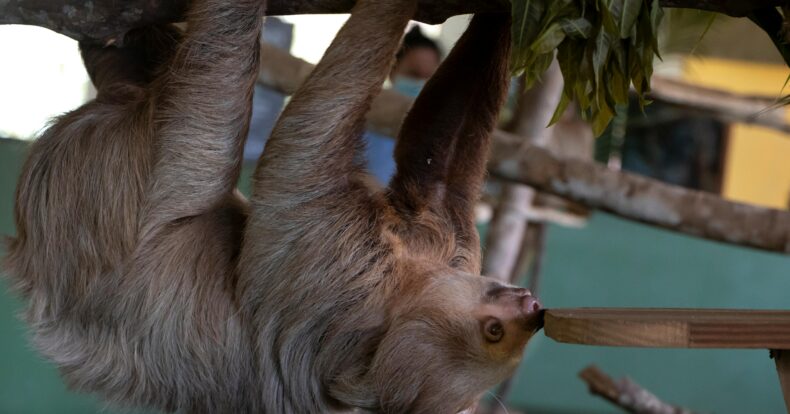
Sloths in Costa Rica
Costa Rica is home to two of the six species of sloth that exist in the world: the two-toed sloth and the three-toed sloth. This friendly herbivorous mammal, which spends most of its life high up in the trees of the rainforests of Central and South America, is considered one of the country’s most beloved and emblematic animals.
In this article, we tell you more about these species, where to find them, and how to enjoy an authentic and responsible experience in their natural habitat.
Types of sloth bears in Costa Rica
Hoffmann’s two-toed sloth (Choloepus hoffmanni)
This sloth is mainly nocturnal and has three toes on its hind feet and two on its front feet. Its fur is usually light brown or blond, and it has a characteristic pink, broad nose reminiscent of a pig’s.


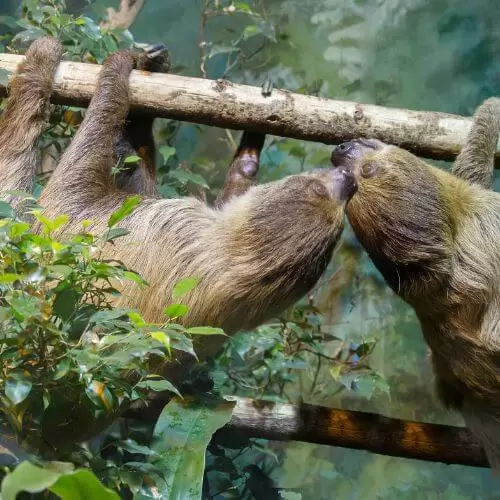
Three-toed sloth with brown throat (Bradypus variegatus)
More commonly seen during the day, this sloth has three fingers on all its feet and is easily recognizable by its “Mona Lisa smile” and black bands around its eyes. Its fur combines shades of gray, black, and white, and is often covered with algae and insects, allowing it to blend in with the vegetation.
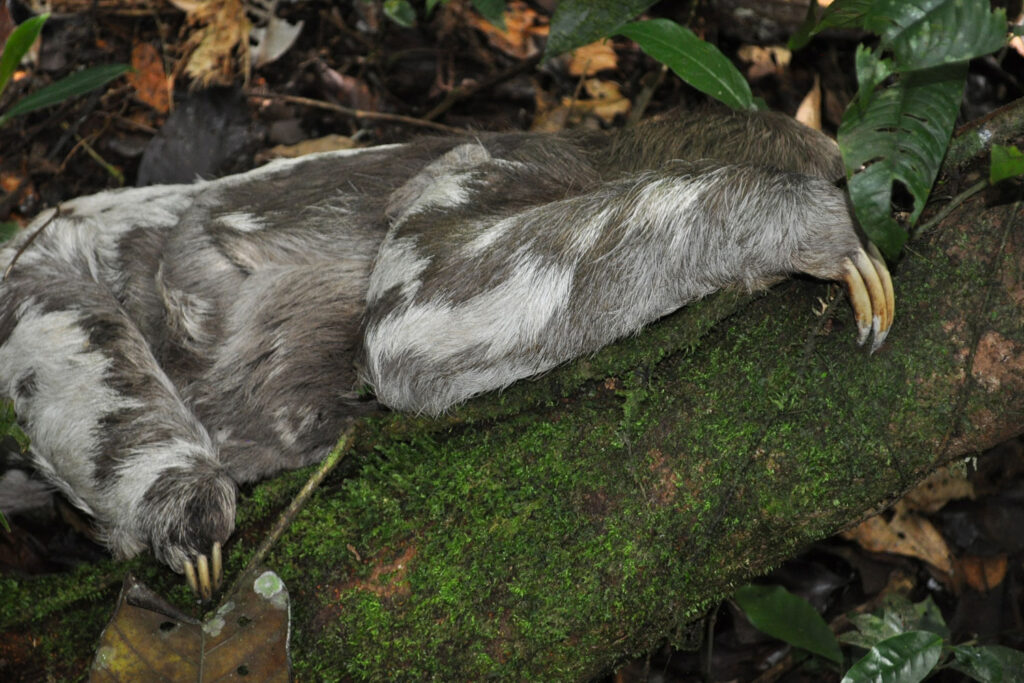
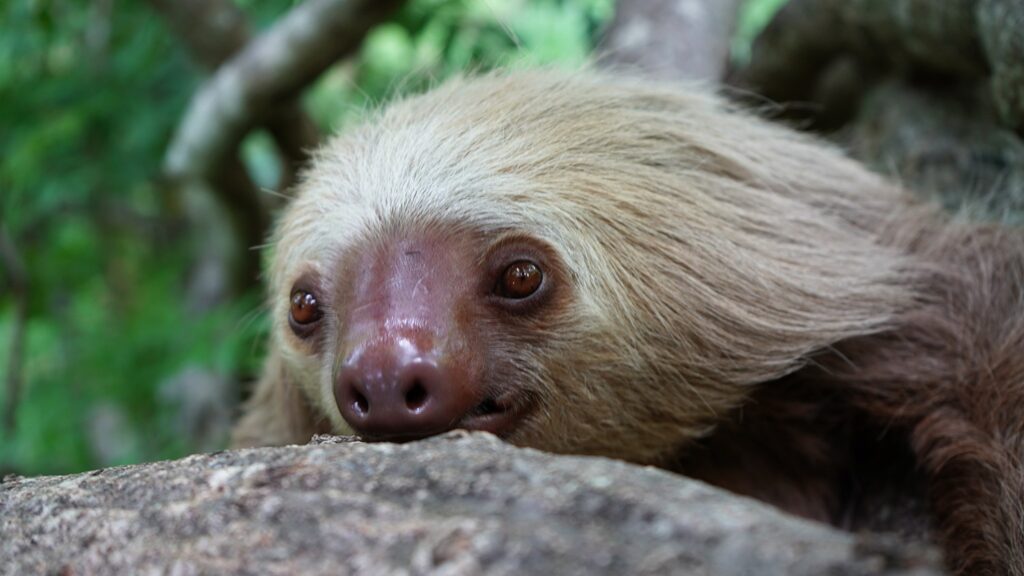
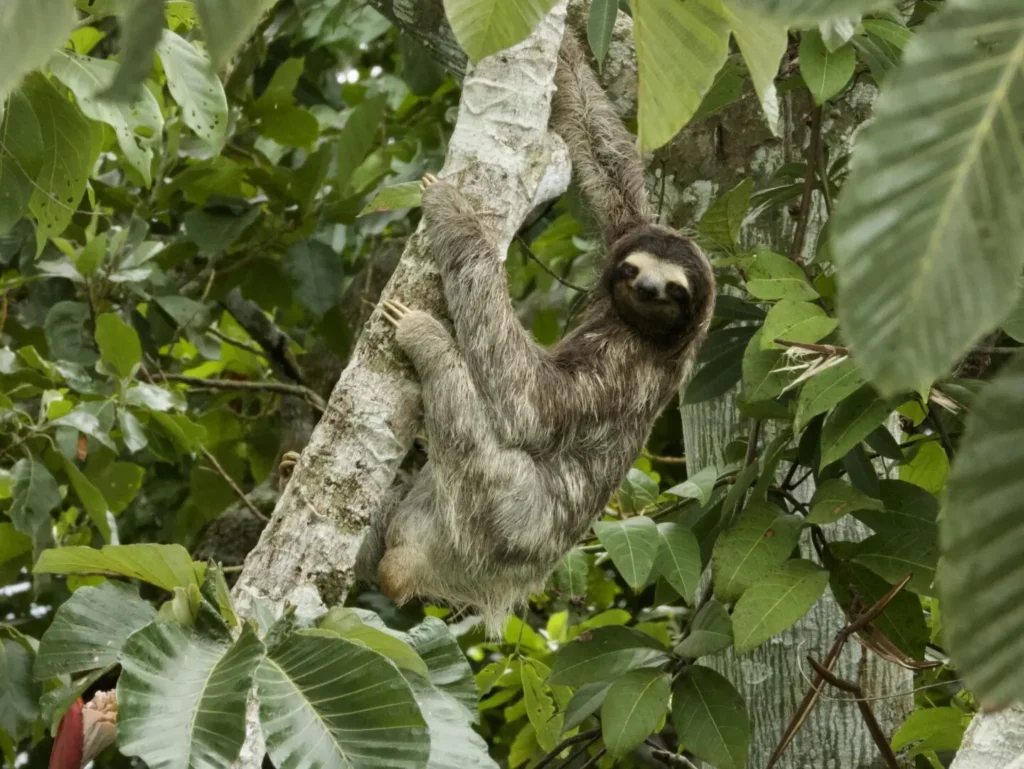
Sloth sanctuary in Costa Rica
En Cahuita, Limón, se encuentra el Sloth Sanctuary of Costa Rica, pionero en la conservación de estos animales. Su misión es el rescate, rehabilitación e investigación de perezosos en la región Caribe.
The sanctuary works with the support of international volunteers, institutions, and private companies, and also welcomes visitors who want to learn more about these species. They offer different guided tours where you can observe two- and three-toed sloths, always under a strict policy of not touching or handling the animals, as they are still wild.
Visitors can also contribute to the project through symbolic adoption programs, souvenirs, and educational experiences, reinforcing the message of conservation and support for national parks, the natural habitat of sloths.
Where can you see sloths in Costa Rica?
These animals mainly inhabit humid tropical forests, although they are also found in more developed areas such as the central campus of the University of Costa Rica, where the internal biological reserve provides refuge for various species.
If you want to increase your chances of seeing them, we recommend visiting these destinations:
- The Fortuna – Arenal
The forests surrounding the Arenal Volcano are the ideal home for sloths. A recommended experience is the suspension bridge tour, where specialized guides help you spot them among the vegetation. - Manuel Antonio National Park
Famous for its biodiversity, it offers two-hour hikes where you can see sloths, monkeys, and birds. The best time to visit is early in the morning. - Corcovado National Park: Considered by National Geographic as “the most biologically intense place on Earth,” this park protects habitats where jaguars, tapirs, and, of course, both types of sloths coexist. To maximize the experience, guided tours from Sirena Station are recommended.
For responsible tourism, always remember:
- Observe the sloths without touching or disturbing them.
- Follow the instructions of guides and experts.
- Report any case of illegal possession of wildlife.
Frequently asked questions about sloths in Costa Rica
When is the best time to see sloths?
They sleep between 14 and 16 hours a day, so there is no exact schedule. However, guided tours are usually conducted during the day, when it is a little easier to observe them.
Can I keep a pet sloth?
No. The MINAE (Ministry of Environment and Energy) strictly prohibits the keeping and trading of wild animals. If you see this happening, please report it to the authorities.
Experience meeting sloths in Costa Rica
Traveling to observe sloths is a unique opportunity to connect with the country’s biodiversity. Whether in a sanctuary, national park, or biological reserve, each encounter reinforces the importance of protecting this beloved symbol of Costa Rican nature.
Sensorial Sunsets
Navigate articles





